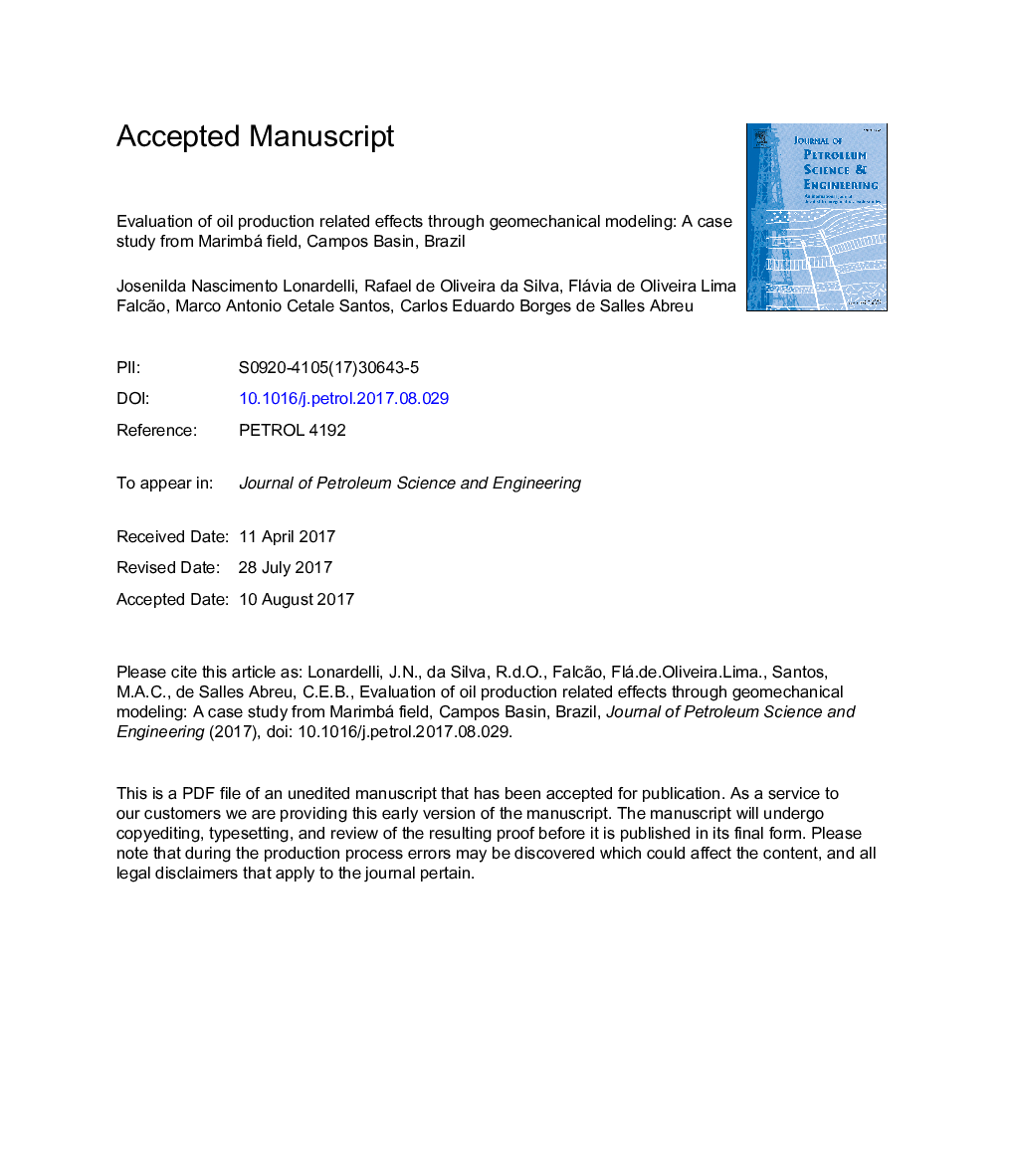| کد مقاله | کد نشریه | سال انتشار | مقاله انگلیسی | نسخه تمام متن |
|---|---|---|---|---|
| 5484047 | 1522783 | 2017 | 19 صفحه PDF | دانلود رایگان |
عنوان انگلیسی مقاله ISI
Evaluation of oil production related effects through geomechanical modeling: A case study from Marimbá field, Campos Basin, Brazil
دانلود مقاله + سفارش ترجمه
دانلود مقاله ISI انگلیسی
رایگان برای ایرانیان
موضوعات مرتبط
مهندسی و علوم پایه
علوم زمین و سیارات
زمین شناسی اقتصادی
پیش نمایش صفحه اول مقاله

چکیده انگلیسی
Hydrocarbon recovery from subsurface reservoirs imposes physical and chemical property changes for both rock-fluid systems when compared to the initial reservoir conditions. These variations depend on intrinsic and extrinsic factors regarding, on the reservoir side, such as effective stress, fluid type, gravity and saturations, porosity, permeability together with the characteristics of the injected fluids and injection pressure, among others. This study carried out a geomechanical modeling to evaluate the oil production related effects in the Marimbá Field, a turbidite sandstone oil bearing reservoir located in the Campos Basin, southeastern offshore Brazil. The applied methodology to solve the proposed problem involves six main stages. It is important to note, when creating a geomechanical model, the finite difference mesh used in the fluid flow simulation and the finite element mesh used for the stress analysis, are not coincident. That is, the pore pressure variation is interpolated to nodal points in the geomechanical mesh. This mesh was generated by using a preprocessor that creates complex geometries, such as those commonly found in turbidite sandstone reservoirs, and was populated with strength and elastic properties by the interpolation of the well logs and laboratory tests information. As an initial field work, the one-way coupling approach was used, enabling the geomechanical effects caused by the Marimbá reservoir production to be quantified. However, compaction and permoporous property updates, in the flow simulator, do not occur. Following the geomechanical model initialization and validation, a hydromechanical coupling phase is implemented, ensuing previously determined time steps. At each time step, the simulation proceeds only if the solution converges, that is, if the difference in pore pressure between two iterations is less than the specified tolerance. Finally, the geomechanical model is analyzed for its effects, mainly those related to displacement and compaction. These changes measure the production process impact on the reservoir and on the adjacent rocks. The critical part of this study is to link these quantified changes against reservoir parameter updates, such as pore-pressure and saturation. From the obtained results, areas of greater strain associated with depletion were observed, suggesting porosity reduction mainly near production wells. With this knowledge, it is possible to optimize reservoir oil production and field management.
ناشر
Database: Elsevier - ScienceDirect (ساینس دایرکت)
Journal: Journal of Petroleum Science and Engineering - Volume 158, September 2017, Pages 186-201
Journal: Journal of Petroleum Science and Engineering - Volume 158, September 2017, Pages 186-201
نویسندگان
Josenilda Nascimento Lonardelli, Rafael de Oliveira da Silva, Flávia de Oliveira Lima Falcão, Marco Antonio Cetale Santos, Carlos Eduardo Borges de Salles Abreu,